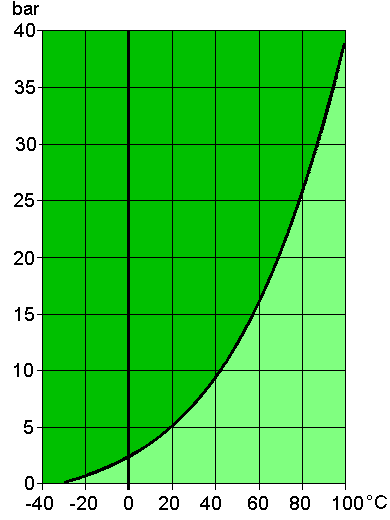|
|
Refrigerant (air conditioning)

Assignment
Modern coolants, like R134a are (Hydro-) fluorine-carbons which do not damage the ozone layer in contrast to fluorine-chlorine-hydrocarbons. However, it is now known that modern air-conditioning units also have
losses of 0.1 litres of coolant per year, which once again, adds up to a large amount which, albeit, does not damage the ozone layer, but does increase the greenhouse effect.
Relief has arrived in the form of the, just as harmful, CO2. However, in this case, it consists of liquids/gases from natural or technical sources which would have resulted anyhow and should, before their entry into the
atmosphere, circulate for a while in vehicle air-conditioning units. R 134a may only be used until 2011 or 2017
, after that it must be replaced by these products. The
regulation of electronic warning facilities concerning leakage is also planned.
Function
The coolant should absorb heat in the interior (evaporator) through pressure reduction and pass it on to the outside air (condenser) through temperature reduction. In the interior it becomes vapourised and
immediately before reaching the radiator, it again returns to liquid form. The above figure shows, in the vapour-pressure curve, at which temperature/pressure combination, the coolant R 134a remains liquid, (dark
green) and when it turns to gas (pale green). At an interior temperature of 20°C, the gaseous state can certainly be reached at a pressure of less than 5 bar. Outside, at over 15 bar and less than 60°C, a, just as
certain, return to liquid form is also possible.
Should however, e.g., through the addition of water, this vapour pressure curve deviate, and thereby the aggregate change no longer
function free of problems, energy loss and even damage to the compressor caused by the influx of liquid coolant can not be not excluded.
A special synthetic oil must be added to the coolant R 134a. It serves the
lubrication of movable components primarily in the compressor. The coolant oil is compatible to the coolant itself and has suitable qualities, it is, e.g., like brake fluid, hygroscopic. This must also to be taken into consideration when (separately) disposing of it.
Note
The coolants used up to now increase the greenhouse effect. If they contain fluorocarbons, they are responsible for increasing the size of the hole in the ozone layer. 08/11
|
|